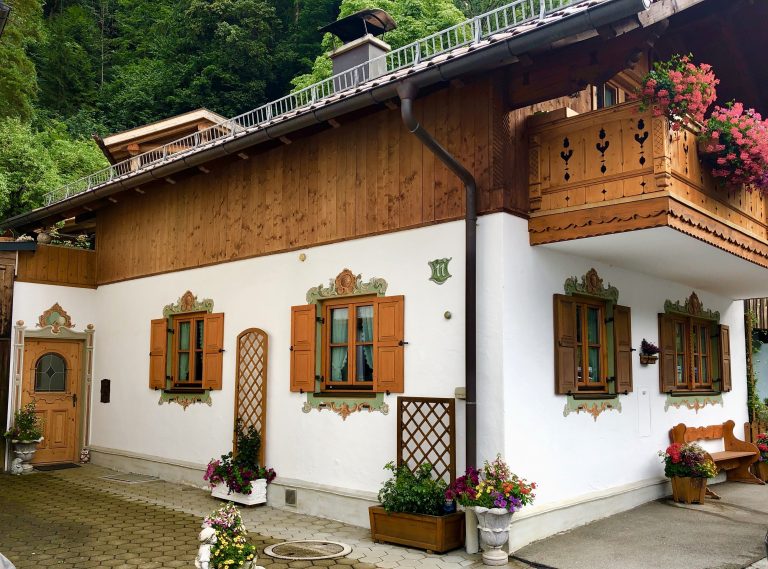Am Gipsbruch
This tiny street just off Prof. Michael-Sachs-Straße in Partenkirchen, is now used as a small parking lot, but it was originally named in 1925 for the Gypsum mines that had existed nearby from the beginning of the 18th century, and which were still being mined until 1872.
Gypsum is a soft, sulfur-rich mineral, which was mined and used as the main ingredient in plaster, but, because of its chemical composition, could also be used as a fertilizer.

At Am Gipsbruch 2, although there are no lüftlmalerei, there is a single icon of Saint Anthony of Padua set in an alcove painted to look like pink marble at the second floor above the street.
In central Italy in the 17th Century, artisans developed a technique for making stucco columns, sculptures, and architectural elements (such as an alcove on the outside of a building) look like marble. This technique was called Scagliola.
One knows that this is a statue of Saint Anthony, the Patron Saint of Lost Things, by his depiction as a monk wearing the robes, or “habit,” of a Franciscan, holding the image of the Christ Child — an artistic reference and shorthand long used by Renaissance painters to differentiate him from other Franciscan saints, such as Saint Anthony Abbot.
Am Gipsbruch 11.
